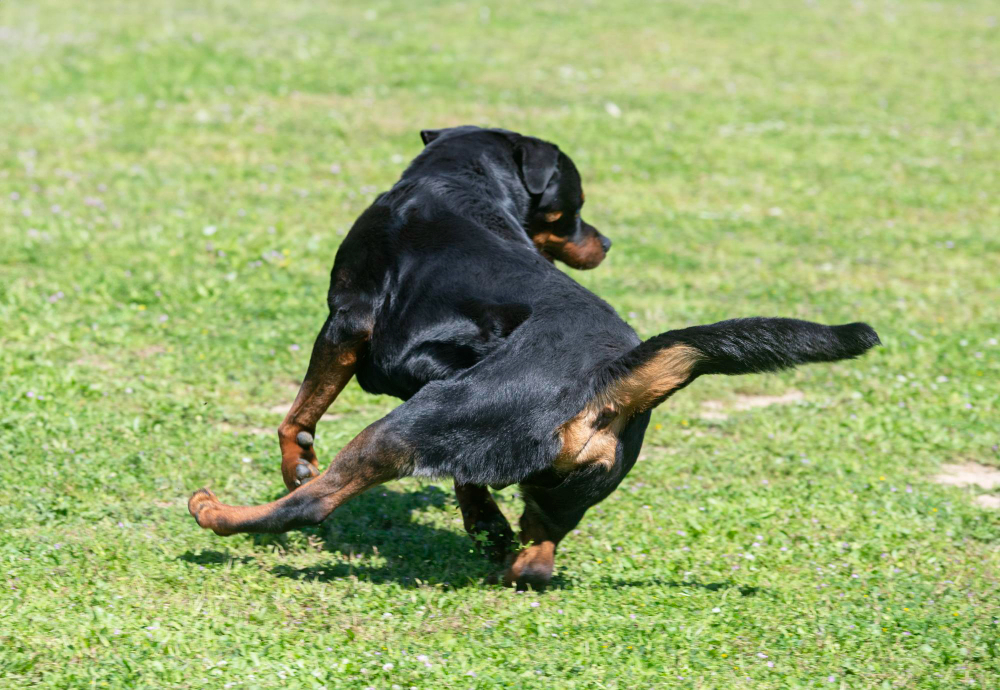Why Do Dogs Chase Their Tails?

Understanding the Tail-Chasing Phenomenon in Dogs
Dogs have long charmed us with their unique quirks, and one of the most perplexing yet endearing habits they display is tail chasing. This circular pursuit of their own tail often evokes laughter and curiosity from pet owners. But behind this amusing spectacle lies a more complex story. Tail chasing isn’t just random behavior—it can arise from a variety of factors, ranging from playful instincts to potential health concerns.
To truly understand this phenomenon, it’s essential to appreciate how vital a dog’s tail is for communication and balance. When a dog chases their tail, they may be reacting to specific stimuli, exploring curiosity, or even signaling an underlying issue. This behavior varies widely among dogs—while some indulge in the occasional playful chase, others might exhibit persistent and intense patterns.
Common Reasons Why Dogs Chase Their Tails
There are numerous reasons why a dog might engage in tail-chasing behavior:
- Boredom: Dogs that lack sufficient physical activity or mental stimulation often find ways to entertain themselves. Tail chasing can serve as a form of self-amusement when they have pent-up energy.
- Attention-Seeking: Some dogs quickly learn that chasing their tails garners reactions—whether it’s laughter or fuss—from their human companions. These reactions can inadvertently reinforce the behavior.
- Curiosity: For puppies, in particular, their tail might seem like an elusive toy that’s always following them. This playful curiosity often leads to tail chasing as they attempt to figure out this mysterious appendage.
- Instinctual Behavior: Certain breeds, such as Bull Terriers, German Shepherds, and Jack Russell Terriers, are naturally more predisposed to chasing behavior due to their instincts and energy levels, which can extend to chasing their own tails.
- Medical Issues: Discomfort caused by skin irritations, flea infestations, or even neurological conditions can prompt dogs to focus on their tails as a means of relief.
Medical Conditions That May Cause Tail Chasing
Sometimes, tail chasing can signal a medical issue. A variety of conditions might lead to this habit:
- Skin Irritations: Allergies or hot spots can cause itching and discomfort, prompting dogs to chase and bite their tails.
- Anal Gland Problems: Impacted or infected anal glands may create discomfort near the tail area, leading to increased focus on this region.
- Neurological Issues: Conditions affecting the nervous system, such as seizures or nerve damage, can result in sensations that trigger tail chasing.
- Tail Injuries: Fractures, sprains, or other injuries to the tail can make a dog hyper-aware of the area, potentially leading to chasing or biting.
- Hormonal Imbalances: Certain endocrine disorders can affect behavior, contributing to tail chasing.
As further described in the American Kennel Club’s article:
“Many times, the action is benign in nature, such as play or attention, to induce someone or something to play with them. Even negative attention, such as a reprimand, might be considered by the puppy as positive attention,” he shares.
There are instances, however, where behavior like tail-chasing may indicate an underlying health condition that requires veterinary care. These can include:
- Canine dysfunction syndrome (CDS). As a dog ages, the neurons in the brain responsible for transmitting information begin to break down, leading to a condition similar to Alzheimer’s disease. Aside from tail-chasing, other symptoms may include sleep pattern changes, disorientation, and separation anxiety.
- Fleas. Fleas frequently bite dogs near the belly, groin, or tail’s base. Tail-chasing might not be targeting the tail itself, but rather, a bite right above it.
- Impacted anal glands. All dogs have anal glands, which are two grape-sized sacs on both sides of the anus. These sacs release scent-marking fluid whenever your dog defecates, but they can fill with liquid, causing discomfort and a fishy odor. Tail-chasing may be your dog attempting to relieve itself of the discomfort.
Other reasons for tail-chasing can include obsessive-compulsive disorder (OCD) or seizure-like activity. These conditions can be addressed by veterinary assessment.’
Playful Behavior vs. Compulsive Tail Chasing
While tail chasing can be an innocent and amusing activity, playful behavior and compulsive tendencies should be distinguished.
- Playful Tail Chasing: Typically, playful chasing occurs sporadically, often during moments of excitement or interactive play. Dogs involved in this type of behavior tend to have relaxed body language and can easily shift their attention to other activities.
- Compulsive Tail Chasing: In contrast, compulsive behavior is characterized by persistence and intensity. A dog might chase its tail for extended periods and seem unable to stop without intervention. This can interfere with daily activities and may even signal underlying anxiety or distress.
Psychological Factors Behind Tail-Chasing Behavior
Beyond physical health, psychological factors can also play a significant role in tail chasing. Stress, anxiety, and even obsessive-compulsive tendencies may manifest as this behavior.
- Dogs experiencing separation anxiety or major life changes—such as moving homes or the addition of a new family member—might chase their tails as a coping mechanism.
- In some cases, tail chasing becomes a learned behavior. For example, if humans react positively or with amusement, the dog may associate tail chasing with gaining attention or approval.
- Dogs with a history of confinement or lack of socialization may develop tail-chasing habits as a way to self-soothe or alleviate boredom.
How Can Pet Insurance Help You if Your Dog Needs a Treatment?
Pet insurance can be a valuable tool in managing the costs of treating a dog’s veterinary expenses. By having a pet insurance policy in place, you can have peace of mind knowing that you can provide medical care for your furry companion without worrying about the financial burden. Pet insurance can help cover the costs of veterinary consultations, diagnostic tests, medications, and even specialized treatments if required.
Reimbursement
This method is the most common for pet insurance companies. You pay out of pocket for the veterinarian bill, and then the insurance company reimburses you for what’s covered under the insurance plan. The steps look like this.
- You pay the vet bill after your dog’s visit.
- You fill out the pet insurance claim form.
- Submit the claim form and other required documentation to the insurer.
- After the claim is approved, you will be reimbursed for eligible expenses.
What Does Odie Pet Insurance Cover?
Pet insurance covers various veterinary expenses, providing financial protection and peace of mind for pet owners. Here are the details of the coverage options offered by Odie Pet Insurance:
Illness & Injury Plan
The Illness & Injury Plan is an all-inclusive insurance plan designed to cover a wide range of medical needs for your pet. This plan includes comprehensive coverage for various illnesses, injuries, and veterinary services. Some of the covered items include:
- Veterinary exams and consultations
- Diagnostics (e.g., X-rays, lab tests)
- Prescribed medications
- Surgeries and hospitalization
- Rehabilitation, acupuncture, or chiropractic treatments
- Medically necessary supplies
- Euthanasia and cremation
The Wellness Plan
The Wellness Plan is a monthly membership that focuses on preventive care and covers routine veterinary services.
- Provides reimbursements for routine care items such as wellness visits (exams and vaccines), testing and parasite prevention, dental cleanings and at-home dental care, vitamins, supplements, and more.
- Through Odie’s partnership with Petivity, a leader in smart pet products and proactive care, Wellness Plan members can also receive reimbursements for Petivity devices and health kits, as well as eligible Purina food and supplements.
- Total reimbursement up to $700 per year.



